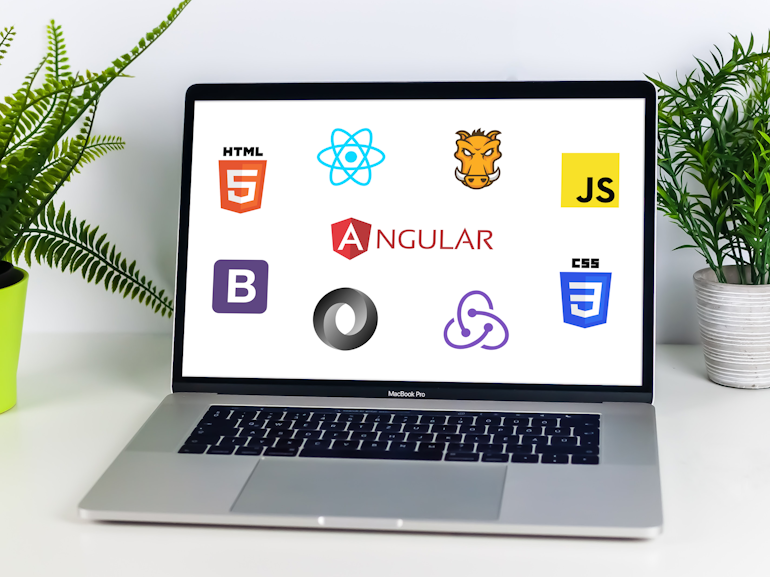Coding, designing, and maintaining a website or web application is a tough job. These tasks are usually done by a web designer, a front-end developer, and a back-end developer.
Imagine having one person do all these. If you think it’s impossible, you’re mistaken. There are tech people who we call full-stack developers. These people are capable of running a website on their own.
Read on to know why hiring a full-stack developer is right for your business.
Why are Full-Stack Developers Important?

When it comes to coding the client-side of a web application, front-end developers are your usual go-to. They are adept at making a web application’s visual presentation excellent. They focus more on making the website more appealing for the clients by using different codes and commands.
A front-end developer may design a website, but the more suitable employee for this is a designer. Similar to a front-end developer, a designer also aims to make the website's visuals look great.
From a designer’s perspective, codes don’t matter. He will only focus on the page’s artistry, the blending of the colours, placement of components, symmetry, and other visuals needed to understand the user’s experience better. He is also responsible for creating the company’s branding and how to make the online presence better.
Back-end development is as vital as designing and developing the front-end of the site. The back-end, also known as the server-side, of a website manages all the requests sent by the user through clicks. You don’t usually notice this process since it happens so fast.
The primary purpose of back-end development is to connect software, databases, and services seamlessly.
All of these tasks can usually be done by a full-stack developer. They can program a browser, a server, and a database, and they know various programming languages. However, being a full-stack developer doesn’t mean that you have mastered all technologies. It only means that you are expected to work on the client and server sides and know how the web application is being developed.
Client Software (Front End)

There is a lot of front-end software in the market that developers use to code client-side web applications. Here is a list of the most commonly used languages and software in front-end development.
- HTML (Hypertext Markup Language)
- CSS (Cascading Style Sheets)
- Bootstrap (HTML, CSS and JS Library)
- W3.CSS (A modern CSS framework with support for desktop, tablet, and mobile design.)
- JavaScript (A programming language that conforms to ECMAScript.)
- ES5 (ECMAScript 5)
- HTML DOM (Standard object model and programming interface for HTML.)
- JSON (JavaScript Object Notation)
- XML (eXtensible Markup Language)
- jQuery (A fast, small, and feature-rich JavaScript library.)
- Angular (A platform for building mobile and desktop web applications.)
- React (A JavaScript library for building user interfaces)
- Backbone.js (A JavaScript library with RESTful JSON interface.)
- Ember.js (A JavaScript framework for building modern web applications.)
- Redux (A small library with a simple, limited API designed to be a predictable container for application state.)
- Storybook (An open-source tool for developing UI components in isolation for React, Vue, and Angular.)
- GraphQL (A query language for APIs and a runtime for fulfiling those queries with your existing data.)
- Meteor.js (An open-source platform for web, mobile, and desktops.)
- Grunt (A JavaScript task runner.)
- Gulp (An open-source JavaScript toolkit used as a streaming build system.)
Server Software (Back End)

Same with front-end development, there is also a lot of software out there that developers can use to develop back-end Web applications. Here are the most common software used.
- PHP (A server scripting language and a powerful tool for making dynamic and interactive Web pages.)
- ASP (A tool for making dynamic Web pages.)
- C++ (A general-purpose programming language)
- C# (A general-purpose, multi-paradigm programming language.)
- Java (A programming language and development platform.)
- Python (An interpreted, high-level, and general-purpose programming language.)
- Node.js (A JavaScript runtime built on Chrome’s V8 JavaScript engine.)
- Express.js (A minimal and flexible Node.js web application framework.)
- Ruby (A programming language that supports multiple programming paradigms, including procedural, object-oriented, and functional programming.)
- REST (An architectural style, or design pattern, for APIs.)
- GO (An open-source programming language that makes it easy to build simple, reliable, and efficient software.)
- SQL (A standard language for storing, manipulating, and retrieving data in databases.)
- MongoDB (A true data platform with a comprehensive suite of tools.)
- Firebase.com (Google’s mobile platform that helps you develop high-quality apps.)
- Sass (Synthetically Awesome Style Sheets)
- Less (A dynamic style sheet language that extends the capability of CSS.)
- Parse.com (A widely used open-source framework for the development of application backends.)
- PaaS (Azure and Heroku) (Platform as a Service)
Popular Stacks
Technology stacks, also known as development stack or software stack, is a data ecosystem that provides a list of the tools, frameworks, and libraries utilized to build and run your Web application.
Tech stacks are divided into two: front-end and back-end side. Here are some examples of the popular stacks used in developing Web applications.
- LAMP stack: JavaScript - Linux - Apache - MySQL - PHP
- LEMP stack: JavaScript - Linux - Nginx - MySQL - PHP
- MEAN stack: JavaScript - MongoDB - Express - AngularJS - Node.js
- Django stack: JavaScript - Python - Django - MySQL
- Ruby on Rails: JavaScript - Ruby - SQLite - Rails
Get in touch with Brain Box Labs to transform your idea into reality.
The Bottom Line
If you are ready to take your website to the next level no matter your industry, Brain Box Labs can help you.
If you need help with your full-stack web development, contact us today.
PRO TIP:
“A great website can help you convert prospects to customers.”
